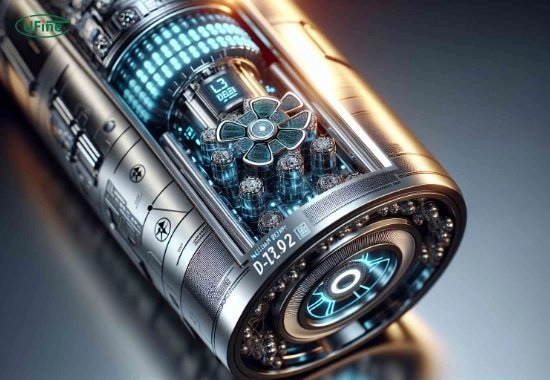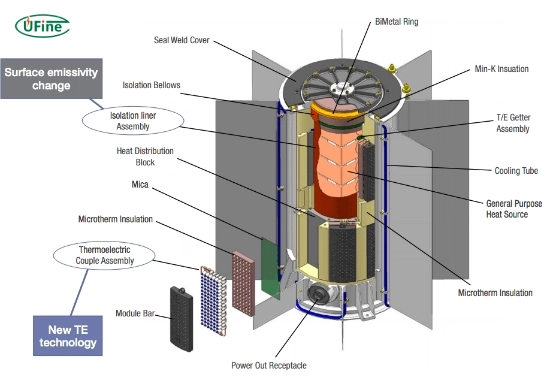
- Part 1. What are nuclear batteries?
- Part 2. How do nuclear batteries work?
- Part 3. What are the main components of a nuclear battery?
- Part 4. Benefits of nuclear batteries
- Part 5. Applications of nuclear batteries
- Part 6. Environmental impact of nuclear batteries
- Part 7. Limitations and challenges of nuclear batteries
- Part 8. FAQs
Nuclear batteries are a new technology that could change energy generation in many sectors. Unlike traditional batteries that depend on chemical reactions, nuclear batteries use the decay of radioactive isotopes. This creates a steady and reliable energy source.
This innovative approach promises longer-lasting power solutions. It also addresses some challenges that conventional battery technologies face.
This article will explore how nuclear batteries could transform technology. It will examine their operation, benefits, applications, and the main components that make them effective.
Part 1. What are nuclear batteries?
Nuclear batteries, often called radioisotope batteries, harness the power of radioactive isotopes to generate electricity. They operate on principles distinct from conventional batteries, which store and release energy through chemical reactions.
Types of Nuclear Batteries
- Radioisotope Thermoelectric Generators (RTGs): These devices convert heat released from radioactive decay into electrical energy using thermoelectric materials. Due to their reliability, RTGs have been widely used in space missions.
- Betavoltaic Cells: These cells generate power from the beta radiation of specific isotopes. They are particularly suited for applications requiring long-lasting power sources.
Nuclear batteries present a unique solution to energy generation, providing consistent and reliable power over extended periods.
Part 2. How do nuclear batteries work?
The operation of nuclear batteries is rooted in nuclear physics principles. When a radioactive isotope decays, it releases particles and energy that can be harnessed to generate electricity through various mechanisms.
Components Involved
- Radioactive Isotopes: Common isotopes used include Plutonium-238 and Strontium-90. These materials emit radiation as they decay.
- Thermoelectric Materials: These materials convert heat generated from radioactive decay into electrical energy. The efficiency of this conversion is crucial for the overall performance of nuclear batteries.
The combination of these components allows nuclear batteries to produce energy continuously without the need for recharging or replacement for several years or even decades.
Part 3. What are the main components of a nuclear battery?
Understanding the main components of a nuclear battery is essential to appreciating how they function and their potential applications:
- Radioactive Isotope Core: This is the heart of the nuclear battery, where decay occurs. The choice of isotope affects the battery’s lifespan and energy output.
- Thermoelectric Converter: This component captures heat from radioactive decay and converts it into electrical energy. Its efficiency is vital for maximizing power output.
- Shielding Material: Shielding materials are incorporated into the design to protect users and the environment from radiation. These materials ensure that radiation is contained within safe limits.
- Housing Structure: The outer casing protects internal components from environmental factors while ensuring safety during operation.
By understanding these components, we can better appreciate how nuclear batteries work and their potential advantages over traditional battery technologies.
Part 4. Benefits of nuclear batteries
Nuclear batteries offer several advantages over traditional battery technologies:
- Longevity: One of the most significant benefits of nuclear batteries is their extended lifespan. They can operate for decades without maintenance or replacement, making them ideal for long-term applications.
- High Energy Density: They provide a much higher energy density than conventional batteries, meaning they can deliver more power in a smaller volume. This feature is particularly advantageous in space exploration, where weight constraints are critical.
- Reliability: The consistent energy output makes nuclear batteries ideal for applications where reliability is paramount, such as in space missions or remote sensors. Their ability to function in extreme conditions further enhances their appeal.
These benefits position nuclear batteries as a compelling alternative in various fields where traditional battery technology falls short.
Part 5. Applications of nuclear batteries
The potential applications of nuclear batteries are vast and varied:
- Space Exploration: NASA has used RTGs in spacecraft like Voyager and Mars rovers. These batteries provide long-lasting power in extreme conditions. These missions need reliable energy sources that last for years without maintenance.
- Medical Devices: Some medical implants need reliable power for long periods. Nuclear batteries are an attractive option for this. For example, pacemakers could benefit from longer-lasting power supplies, reducing the need for surgical replacements.
- Remote Sensors: Nuclear batteries offer a dependable solution where traditional power sources do not work well, like deep-sea or polar environments. They allow for continuous monitoring without frequent maintenance or battery changes.
As technology advances, the scope of applications for nuclear batteries is expected to expand further into sectors like telecommunications and military operations.
Part 6. Environmental impact of nuclear batteries
When discussing any form of energy generation, environmental impact is a crucial consideration:
Safety and Waste Management
Nuclear batteries produce less waste than traditional batteries, which often contain toxic materials and need complex recycling. However, managing radioactive materials is still a concern. This issue must be handled with strict regulations and safety measures.
Comparing Environmental Footprints
Nuclear batteries have lower carbon emissions and a smaller ecological impact than many conventional options. Their long lifespan means fewer resources are used for replacements, supporting sustainability efforts.
Part 7. Limitations and challenges of nuclear batteries
Despite their many advantages, nuclear batteries face several challenges:
- Technical Challenges: Developing efficient thermoelectric materials and safely handling radioactive isotopes are ongoing research areas. These need improved performance.
- Regulatory Hurdles: The use of radioactive materials is heavily regulated. This can slow down development and deployment in certain markets. Navigating these regulations requires teamwork between researchers and policymakers.
- Public Perception: Concerns about safety and environmental risks linked to nuclear technology can hinder acceptance among consumers and industries. Education and transparency are key to addressing these worries.
Overcoming these challenges will be critical for the future success of nuclear battery technology.
Part 8. FAQs
-
What are the key advantages of using nuclear batteries over conventional batteries?
Nuclear batteries offer longer lifespans, higher energy density, and reliability than traditional battery technologies. -
Are nuclear batteries safe for environmental use?
When managed correctly according to regulatory guidelines, nuclear batteries present minimal environmental risks compared to many conventional battery technologies. -
How long can nuclear batteries last?
Depending on the design and application, nuclear batteries can last anywhere from 10 to over 50 years without needing replacement or maintenance. -
What industries are most likely to adopt nuclear batteries?
Industries such as aerospace, healthcare (medical devices), and remote sensing applications are prime candidates for adopting nuclear battery technology due to their unique requirements for reliable power sources. -
Can nuclear batteries be recycled?
While recycling options exist for some components of nuclear batteries, the radioactive materials require specialized handling due to safety concerns. Research into more sustainable recycling methods is ongoing.
Related Tags:
More Articles

How to Connect Lithium Batteries in Series and Parallel?
We'll explore the basics and provide detailed, step-by-step instructions on how to connect li-ion cells in series, parallel, and series-parallel configurations.
How Long Can a 12V 5Ah Battery Power Devices?
Wondering how long a 12V 5Ah battery lasts? Find out the details now and optimize your usage. Get the info you need today!
Is It Bad to Fully Discharge a Lithium Ion Battery?
Discover what happens if a lithium battery is fully discharged and how to safely recharge 12V batteries to prevent permanent damage.
Does a Higher mAh Battery Last Longer?
Does a higher mAh battery really last longer? Learn what mAh means, real battery life in hours, replacement safety (4000 vs 5000mAh), and real examples.
Exploring the Lithium Ion Battery Fire Temperature
Discover the lithium-ion battery fire temperature and learn how to stay safe. Get essential tips to prevent battery fires and protect your devices today.




